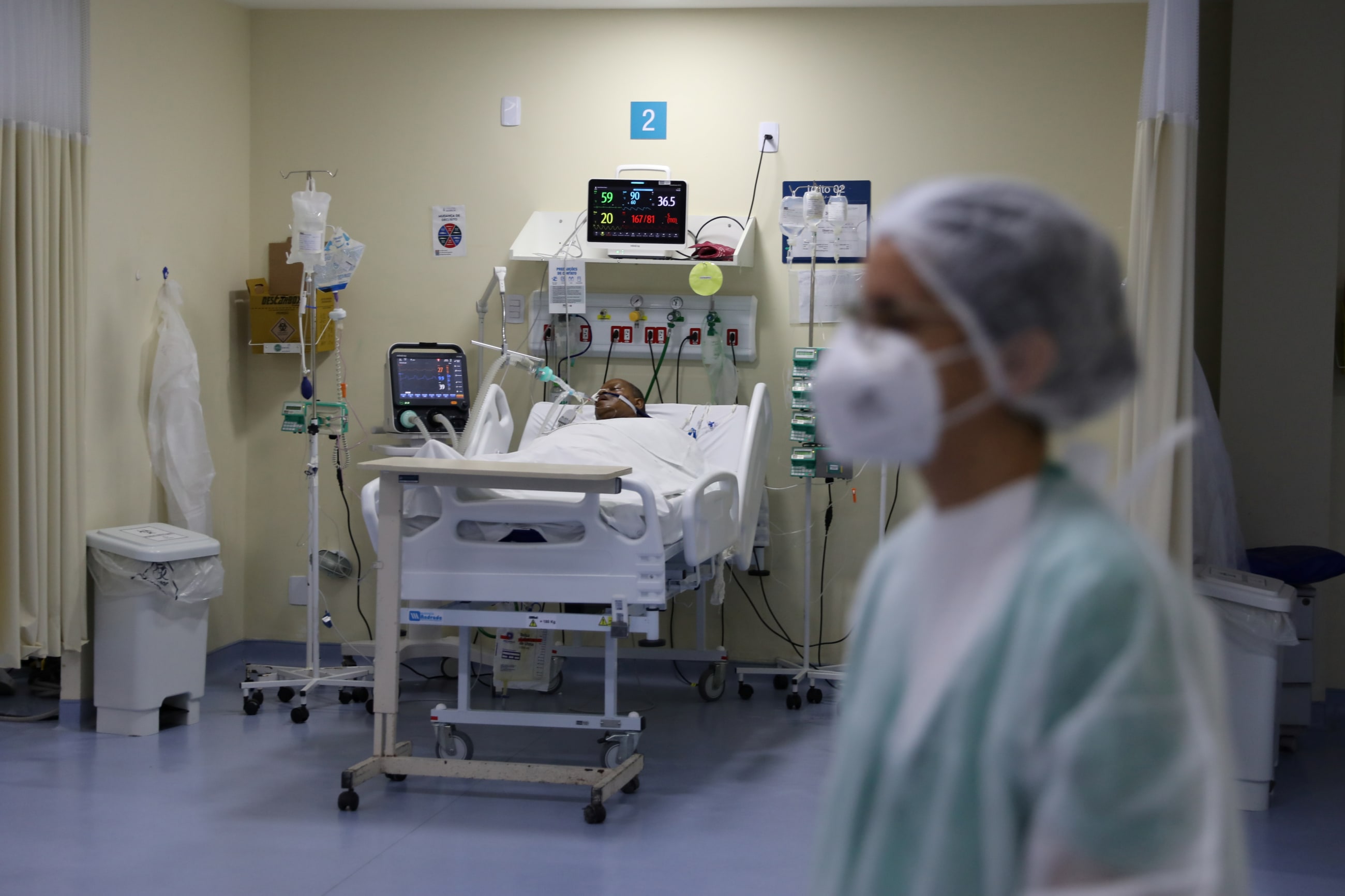Imagine this: Someone you love is suddenly gasping for breath, their body reacting violently to an unseen enemy. This is anaphylaxis, a severe allergic reaction that requires immediate medical attention. In many low- or middle-income countries, such as Brazil, emergency rooms often lack the standard treatment for allergic reactions—epinephrine auto-injectors, or EpiPens—leaving the population without easy access to this lifesaving tool.
From 2013 to 2022, some 3,025 deaths attributable to anaphylaxis were officially registered, 17.7% of which occurred before the individual reached the emergency department. Hospitalizations and fatalities, however, did decline during the COVID-19 pandemic, likely because of fewer allergen exposures and less health-care availability.
Even with this decline, better anaphylactic management is needed. Approximately 1,200 patients, on average, are hospitalized each year, with 90% of cases treated in the emergency room. The first Brazilian registry of anaphylaxis indicates a higher mortality rate compared to global records.
Common triggers for anaphylaxis include foods, insect stings, medications, and latex. Quick administration of epinephrine, also known as adrenaline, is crucial to counteract symptoms. Those with allergies are advised and encouraged to carry EpiPens. Long-term condition management involves identifying allergens, educating patients, and possibly allergen immunotherapy. Ensuring easy access to treatments such as EpiPens is vital to preventing serious outcomes.
Expanding Access to EpiPens
Despite the EpiPen's role in preventing fatal outcomes, only 27.8% of countries in South America can import auto-injectors, and none manufacture them locally. EpiPens are not registered for sale in Brazil. Patients must instead purchase them through specialized import companies at a cost of around 1,000 Brazilian real ($182) for two pens, which expire after one to two years. This makes the treatment inaccessible to many, especially those with low incomes. This limited access aside, regulatory changes are essential to making EpiPens readily available and affordable in Brazil.
Several bills aim to tackle anaphylaxis and the availability of auto-injectable adrenaline. One significant initiative is H.R. 1945/2021, which mandates reporting anaphylaxis/anaphylactic shock incidents to the Health Surveillance Secretariat of the Ministry of Health. Another is H.R. 85/24, which calls for the free provision of auto-injectable adrenaline pens and their inclusion in the Sistema Único de Saúde (SUS) medication list.
The Programa Caneta da Vida (My Pen of Life) is a program to ensure access for at-risk individuals and students at schools. Its efforts highlight progress in achieving broader access to lifesaving treatments for severe allergic reactions. Both H.R. 1945/2021 and H.R. 85/24 are being assessed by the specific commissions in the House of Representatives. If approved, they will move to the Senate for a review of legal or constitutional matters, and, if no objections are raised, will become law.
Although ampoules of adrenaline are more widely available than EpiPens, they are not ideal for general use during an anaphylactic emergency. Measuring and administering the correct dose under stress is complicated and prone to errors, which can lead to severe consequences or fatalities. EpiPens, designed to provide a precise dose rapidly and efficiently, minimize the risk of mistakes and ensure prompt treatment, making them a much safer option for managing anaphylaxis.
The inconsistent data in Brazil's health-care system exacerbates the critical issue of limited access to lifesaving EpiPens, making it difficult to accurately assess and address the true scale of the anaphylaxis problem.
In Brazil, health-care systems struggle to obtain trustworthy data on the incidence, hospitalization rates, and death by anaphylaxis. Given variations in study techniques, health-care infrastructures, and definitions, epidemiological statistics reveal wide ranges in numbers. Anaphylaxis may cause up to 0.26% of all hospital admissions, according to several studies that emphasize case heterogeneity and possible underreporting in Brazil.
A study from 2011 to 2019 identified 5,716 hospital admissions due to anaphylaxis, showing an average hospitalization rate of 0.71 per 100,000 population per year and a 2.4% annual increase in admissions. The case fatality rate in Brazil was notably high at 5.8%, and most fatalities were linked to iatrogenic causes and insect stings. This contrasts sharply with global data, where the mortality rate from anaphylaxis generally ranges from 0.5 to 1 fatality per million population. The higher mortality rate in Brazil could be attributed to more severe cases being admitted to hospitals and potential delays in accessing emergency care, both due to the limited availability of adrenaline auto-injectors.
When comparing anaphylaxis data between Brazil and the rest of the world, significant differences in management and outcomes become apparent. In many high-income countries, lower mortality rates are attributed to comprehensive data collection systems and the widespread availability of adrenaline auto-injectors, despite increasing hospitalization rates. For instance, in the United States, though the incidence of anaphylaxis is similar to other countries, the case-fatality rate is lower due to quicker and more effective emergency response systems and widespread access to EpiPens.
In contrast, Brazil's health-care system faces challenges in ensuring timely access to lifesaving therapies, leading to higher observed mortality rates. This disparity highlights the pressing need for improved public health policies and investments in lower- or middle-income countries to enhance anaphylaxis management and reduce mortality.
How the ICD Shapes Anaphylaxis Data
The International Classification of Diseases (ICD) is the global standard for coding health conditions. The current one, ICD-10, however, lacks anaphylactic shock–specific reimbursement codes, which results in fragmented data collection and inconsistent reporting. For example, ICD-10 places anaphylaxis under broad categories that comprehensively cover only some causes and manifestations, resulting in fragmented data collection and inconsistent reporting. This gap hampers epidemiological studies and effective public health interventions. Without proper coding and classification, health-care providers struggle to diagnose and report anaphylaxis accurately, exacerbating the issue.
Without proper coding and classification, health-care providers struggle to diagnose and report anaphylaxis accurately
The upcoming ICD-11, with more specific codes for different types of anaphylaxis, is expected to address these deficiencies. ICD-11 includes distinct codes for food-induced, drug-induced, and insect venom–induced anaphylaxis, as well as categories for anaphylaxis induced by physical factors and allergens. This refined classification framework is anticipated to enhance diagnostic accuracy and improve the reliability of epidemiological data. Until these new codes are fully integrated and widely adopted, however, Brazil and other countries will continue to face challenges in managing anaphylaxis effectively.
The Lifesaving Potential of Adrenaline Pens
In Brazil, the availability of epinephrine auto-injectors, such as EpiPens, goes far beyond convenience—it's a matter of survival. Integrating these devices into the country's health-care system could drastically lower the worrisome mortality rates linked to anaphylaxis. The transition to the upcoming ICD-11, with its more detailed classifications for different triggers of anaphylaxis, is a crucial advancement in improving diagnosis, treatment, and data accuracy. These changes are set to enhance medical professionals' understanding of the condition and to foster more effective public health responses.
The challenge of making EpiPens widely accessible is not solely about updating medical coding systems. It's about enacting policy reforms that ensure these essential devices are affordable and within reach for everyone who needs them. Legislative efforts, including H.R. 85/24 and the Programa Caneta da Vida, reflect promising strides toward ensuring that those at risk of anaphylaxis can access the necessary tools to protect their lives.
By making adrenaline auto-injectors a standard component of emergency care, Brazil can significantly strengthen its defenses against the devastating impact of anaphylaxis.













